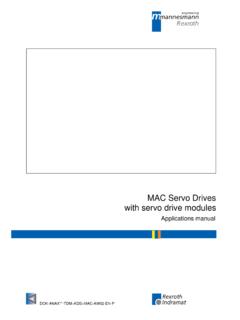Transcription of High-speed, high-bandwidth DRAM memory bus with …
1 1 HOT INTERCONNECT 2001 Systems Development , high-bandwidth DRAM memory bus withCrosstalk transfer logic (XTL) interfaceHideki OsakaHitachi Ltd., Kanagawa, KomatsuHitachi Ltd., Kanagawa, HatanoElpida memory Inc., Kanagawa, WadaHitachi Ltd., Tokyo, ELPIDA MEMORYHOT INTERCONNECT 2001 Systems Development Requirements of server memory system Background of high-speed interconnect Mechanism of XTL Design of evaluation system m process TEST chip ( hysteresis receiver) 8 modules mountable PCB w/ folding coupler XTL Experimental result Conclusion2 HOT INTERCONNECT 2001 Systems Development of server memory system memory system for high-performance workstation and server High band width Large capacity Low latency access Low power High availability Cost02004006008001000120019 97 19 98 19 99 2000 20012002 Freq [MHz]
2 YearDDR-XTLCPUDRAMT argetHOT INTERCONNECT 2001 Systems Development Bus cheaper than point-to-point Low pin count and small real estate owing to sharing signal However, hard to manage trade-off speed-up and noise ISI (Inter Symbol Interference) limits speed-up Multi- reflections between branch points Important impedance flatness Information in a transition of datum Rising: L H, Falling: H L No change: Stable datum (L L/H H)Background of high-speed noise on busLSILSILSI3 HOT INTERCONNECT 2001 Systems Development of XTL Many modules mountable a bus: 4 to 8 DIMM (conventionally 2 ~ 4) High speed operation: > 500 Mbps Very small reflection noise ( lesser ISI ) Signal transmitter.
3 Directional couplerformed in PCB Small impedance violation Transition data capture (NRZ RZ ) Hot Swappable DC Isolation (signal) C-MOS technology Push-pull driver (same as conventional SSTL driver) Hysteresis receiver Low cost PCB ( 2 signal layers )RZNRZ couplerHOT INTERCONNECT 2001 Systems Development of XTL (WRITE mode) No branch on a mainline:Impedance flat of the mainline Drive NRZ signal from memory Controller Transform to RZ signal at coupler and Demodulate by hysteresis receiverDriverRttDirectional couplerFlat impedance and small reflectionNo brunchMCDRAM NRZH ysteresis receiverRZNRZ demodulation4 HOT INTERCONNECT 2001 Systems Development Mechanism of XTL (READ mode)
4 READ mode Opposite direction, but the same mechanism as WRITE mode DC isolationDriverHysteresis receiverFlat impedance and small reflectionNo brunchMCDRAMHOT INTERCONNECT 2001 Systems Development of XTL evaluation systemEvaluate XTL performance for DRAM memory bus m DRAM process chip (HS-TEG) I/O circuits Driver: Impedance and slew-rate controllable Receiver: Controllable hysteresis Vernier timing controller PCB (Motherboard and DIMM) 8 modules mountable motherboard 2 layers for folding coupler( total 8 layers stacking) Low cost using conventional technology Line width and spacing = 100 / 100 m [4 mil]5 HOT INTERCONNECT 2001 Systems Development waveform (RZ signal)VthpVthnReceiver designVinVoutVthpVthn Demodulate from RZ signal to NRZ High-speed operational receiver Receiver consists 2 controllable-offset comparators + RS-FF Hysteresis offset.
5 50, 100, 150 mV(b) Controllable offset comparatorVrefINHSTO utput waveform (NRZ signal)VrefINOUTRSTSROUTHST3(a) Hysteresis receiver circuitHOT INTERCONNECT 2001 Systems Development Coupler Low cost low noise folding line structure Reduce layers High density Avoid noise from adjacent signals Parameters Coupler 40 mm [ '] length Zo ( mainline ) = 75 Coupling coeff. ~ 25 % L/S = 100/100 m [4mil]Sub-coupling lineMainlineVttTo chip BTo chip ASignal from controllerTo RttVttXTL coupler layout on a PCB layer1236 HOT INTERCONNECT 2001 Systems Development test chipFeatures: XTL interface test chip: m process 54-ball CSP (Chips Scale Package) No DRAM cellFigure 6.
6 DIE photo of HS-TEG chip'4 SRUW'//'; SRUWRWKHU IXQF YHUQLHUHOT INTERCONNECT 2001 Systems Development PCB 8 modules mountable 4 bytes bus width Low cost PCB using conventional technology L/S = 100/100 m [4 mil] 2 Signal layers (total 8 layers)Figure 7. Test board; a mother board and mounted 8 modules;All modules mounted 4 HS-TEG interfaceC ontroller (down side)DIMMsMother BoardXTL wiringarea7 HOT INTERCONNECT 2001 Systems Development of XTL signalsDirectional couplerDirectional coupler240-pin SMDDIMM socketTermination resisterTermination resisterHOT INTERCONNECT 2001 Systems Development results (1) Impedance measured when 1,4 and 8 DIMMs loaded Impedance variationof mainline < 6 ISI effect waveform [V]TIME [ns]HS - TEG capacitive reflection50 [ ohm]75 [ohm]Ro u n d t r ip flight time ~ 7 [ns]TDR waveform.
7 Drive pulse applied to the ball of the HS-TEG of the mainlineTDR : Time Domain Reflectometry)8 HOT INTERCONNECT 2001 Systems Development results (2) XTL Signaling Drive falling time : 181 - 947 ps [20-80%] XTL signal: 305 - 197 mV (@ 8thmodule) Coupling ration: Kb ~ 24 % ( = XTL signal / Drive pulse)100 mV500 mVDrive pulse of the mainline(a) HS-TEG point(b) Termination point(c) 1st (d) 4th(e) 8thXTL signal1 nsDrive pulse and XTL signalHOT INTERCONNECT 2001 Systems Development results (3) (a) 400 Mbps at 1st module (b) 400 Mbps at 4th module(c) 400 Mbps at 8th module(d) 600 Mbps at 1st module (e) 600 Mbps at 4th module(f) 600 Mbps at 8th module(g) 800 Mbps at 1st module (h) 800 Mbps at 4th module(i)
8 800 Mbps at 8th module200 mV2 ns200 mV2 ns200 mV2 ns200 mV1 ns200 mV1 ns200 mV1 ns200 mV1 ns200 mV1 ns200 mV1 ns400 Mbps600 Mbps800 Mbps Eye diagram of XTL signaling (write mode)9 HOT INTERCONNECT 2001 Systems Development results (4) Max. operation frequency w/ Error Rate Tester Adjacent signals drove First module: over 600 Mbps 8th modules: over 500 Mbps Adjacent noise: mV [600 Mbps / 4thmodule]524 Mbps523 MbpsDIMM#8(Far end)604 Mbps612 MbpsDIMM#1(Near End)ReadWriteTable 1 Maximum operation frequencyTyp. ConditionRoom < 10 -12MC#8 #1#4pulse HOT INTERCONNECT 2001 Systems Development XTL interconnection applied to DRAM memory bus Evaluation results Over 500 Mbps operation with 8 modules both read and write Test chip m DRAM process Receiver.
9 Controllable offset 50, 100, 150 mV Test board Only two signal layers for four byte bus Folding coupler reduces signal layers and avoid adjacent noise Hot swappable ( DC isolated signal)10 HOT INTERCONNECT 2001 Systems Development Signaling of various memory buses Preamble of DQ/DQS Clock routing of DQ / DQSHOT INTERCONNECT 2001 Systems Development of various memory buses DDR-SDRAM interface comparison Multi-reflection causes Inter-symbol interference degradationLVTTL(PC100/133)SSTL(DDR-II)X TL (proposal)Low Voltage TTLStub SeriesTerminated LogicCrosstalkTransceiver LogicDriverpush-pull/open-drainpush-pull push-pullReceiverSingle-end/Differential DifferentialHysteresisBranchDirectional couplerReflectionLarge ~ 33 %Medium ~ 20 %Small ~ 6 %Bus BranchInterfaceStub LineZ1 Main Line Zo1Ma in LineStub LineZoZ1 ~ 20% ~ 20%1Ma in LineStub LineZo1 ZoSeries TerminationDirect branchMC ~ 33% ~ 33%*~ 6% *~ 6% RstubRttDRAM11 HOT INTERCONNECT 2001 Systems Development of DQ/DQS Low-state preamble before DQ/DQS Halved XTL signal from idle state to first datat0t1t2t3t4t5t6
10 Basic Write OperationCommandAddressACTVNOPWRITENOPRO WCOLUMNNOPNOPBL=4D0D1D2D3 CLK/CLKBDQ(TX)DQS(TX)DQ(RX)DQS(RX)Halved XTL signalPreambleRST (internal signal )D0D1D2D3 Output of XTL receiverPreamble added before DQ and DQS and internal reset signal of DRAM receiverHOT INTERCONNECT 2001 Systems Development routing of DQ / DQS Read DQ/DQS same as CLKDIMM1 Controller(HS-TEG)DQDIMM2 DIMM8 VttRttTerminationCLK/CLKBLXTLCLK




